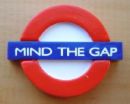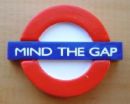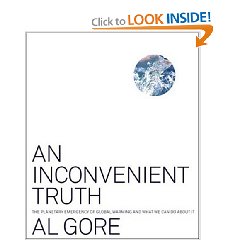 7 Star Life Transformative Showing True Perfidy in White House = 23 Documented High Crimes That Should Put Cheney in Irons Immediately,
7 Star Life Transformative Showing True Perfidy in White House = 23 Documented High Crimes That Should Put Cheney in Irons Immediately,
EDITED 5 September 2007 to add ten links to other related books.
This book is vastly more detailed, and covers more high crimes and misdemeanors, than either State of Denial, which misunderstands Bush as being in charge, or Crossing the Rubicon, which focuses primarily on Cheney's role in first permitting 9-11, and then working assiduously to cover up his malicious malfeasance. See also Ron Susskind's book, “One Percent Doctrine,” which crucifies Cheney, Rumseld, and Rice.
I take this book so seriously that I urge everyone to get the “Do It Yourself Impeachment” kit. He should be required to immediately resign or be impeached. He should not be allowed to serve another month in office.
For the sake of brevity, here is a list of impeachable offenses documented by this book:
1) Secret meetings in violation of the law to include exclusion of government experts
2) Refusal to honor demand from Congress for a list of participants
3) Lies to the public about Iraq, while holding maps of oil fields and already having in mind a US-only domination of those oilfields (he first focused on Iraqi oil while serving Secretary of Defense Brown)
4) Over-ruling of the Environmental Protection Agency on very important matters including its concern over Halliburton's reliance on hydraulic fracturing that uses chemicals that contaminate aquifers–Cheney personally ensured that the EPA's wording was replaced with Halliburton's wording.
5) Consistent and pervasive usurpation of Congressional authorities and consistent and maliciously deliberate avoidance of appropriate disclosure.
6) Fostered attacks on Sy Hersh, and considered authorizing a break-in on his home.
7) From the 1970's, see also Ron Susskind's One-Percent Doctrine, subverted the authority of the Vice President, Nelson Rockefeller, and teams with Justice Scalia (then an assistant attorney general) to increase executive privileges and push back reforms.
8) As a Congressman personally blew off Russian offer in 1983 for arms cuts, and subverted the authority of the President and the Secretary of State then serving.
9) As an extremist Republican, supported Ollie North and the White House in violating the Congressional prohibitions on aid to the Contras, and obstructed justice thereafter.
10) Page 78 has a lovely discussion of how Cheney and North were “in the zone” in deceiving the public and Congress during the televised hearings.
11) Adopted as his own the lunatic report by Khalizad (who is a very lazy scholar, see my review of his rotten RAND book on revolution) and Libby, on how the US as a superpower should be able to do ANYTHING.
12) Attempted to undermine due process and keep tactical nuclear weapons in the Army inventory.
13) Subverted the authority of the Secretary of State (Colin Powell) by allowing his daughter to overrule Ambassadors and meet privately with various heads of state.
13) Lied repeatedly to the public about his continuing financial equities with Halliburton, and was so involved in giving Halliburton up to 16 billion in no bid contracts.
14) Shut both foreign competitors and more cost-effective indigenous contracting solutions, severely harming the national security of the United States by fostering an environment of unproductive looting by Halliburton, Bechtel, and others.
15) Ignored his dual mandates on terrorism and intelligence. The book suggests that Bush was not briefed on Al Qaeda for the first eight months he was in office (the Vice President's priorities were energy and missile defense).
16) Personally impeded negotiations with North Korea after they proved amenable to diplomatic engagement.
17) Personally rejected Iranian overtures for negotiation conveyed by the Swiss in 2003
18) Personally reinforced Rumsfeld on use of torture, by-passing the President's more measured restrictions.
19) Conspired with Speaker Hastert to subordinate the House of Representatives, using a special office of his own (first time in history) so that Representatives could be brought to him rather than his calling on them.
20) Manipulated the President into numerous “signing statements” inconsistent with the will of Congress that ignored legislation then in force.
21) “Bureaucratically emasculated” the President (page 177–if the President has a friend that reads this review, PLEASE get the book and the review to the President–he really may have no idea his balls have been cut off)
22) Contemptuous and manipulative of the CIA, refusing to accept their best professional judgments based not only all source intelligence, but on a extraordinary effort by Charlie Allen in running line crossers into Iraq to document beyond a shadow of a doubt that there were no weapons of mass destruction there.
23) Lied repeatedly, over and over, to the public, to Congress, to the President, to foreign leaders, even after the lies were exposed he continued to repeat them.
The book does not discuss the 9-11 situation and emerging findings that place the Vice President at the center of our deliberately inept response.
Two gems apart from the impeachable offenses:
1) The search for a Vice President was a complete fraud, he was picked from day one, and made a fool of every serious candidate, while also personally leaking to destroy Keating just to ensure the only real rival would not be considered at the last minute.
2) The discussion of Joe Lieberman's refusal to confront Cheney with all that was known to be wrong with him was explained at the time as “taking the high moral road.” I am not so sure. I speculate that Lieberman is actually a neo-con and has been playing the Democrats for fools while minding the interests of his Wall Street masters.
On page 147 the authors discuss how Cheney accused Clinton and Gore of “extend[ing] our military commitments while depleting our military power.” Lovely. And now?
The authors conclude that Dick Cheney is “nakedly amoral.” I agree.
One final scary note: in the many doomsday drills that Cheney participated in across his career and inclusive of his Vice Presidency, they always failed to reconstitute Congress.
Dick Cheney has done more damage and is a greater threat to our Republic and others, than Bin Laden and Saddam Hussein combined.
The One Percent Doctrine: Deep Inside America's Pursuit of Its Enemies Since 9/11
Crossing the Rubicon: The Decline of the American Empire at the End of the Age of Oil
Weapons of Mass Deception: The Uses of Propaganda in Bush's War on Iraq
Debunking 9/11 Debunking: An Answer to Popular Mechanics and Other Defenders of the Official Conspiracy Theory
9/11 Synthetic Terror: Made in USA, Fourth Edition
State of Denial: Bush at War, Part III
The Road to 9/11: Wealth, Empire, and the Future of America
9/11 Mysteries Part 1: Demolitions
9/11: Press For Truth
9/11 – The Myth and the Reality
Aftermath: Unanswered Questions from 9/11
For those wondering why Congress failed to do its Article 1 job (hence all Members are impeachable for dereliction of duty as well):
Running on Empty: How the Democratic and Republican Parties Are Bankrupting Our Future and What Americans Can Do About It
The Broken Branch: How Congress Is Failing America and How to Get It Back on Track (Institutions of American Democracy)
Breach of Trust: How Washington Turns Outsiders Into Insiders











